Chakrasamvara | Lord of the Circle, Tantric Deity
USD 1,980.00
Height:33cm (13″)
Width:24cm (9″)
Depth:13cm (5″)
Weight:4.52 kg – 9.96 lbs
Material:24K Gold Gilded,Acrylic Paintings, Copper Body.
1 in stock



Additional information
| Weight | 4.5 kg |
|---|---|
| Dimensions | 13 × 24 × 33 cm |
1 in stock

FREE SHIPPING WORLDWIDE

FREE 14 -DAY RETURNS

SATISFACTION GUARANTEE

100% SECRUE CHECKOUT
Chakrasamvara | Lord of the Circle, Tantric Deity
Chakrasamvara (Sanskrit: Cakrasaṃvara; Tibetan: Khorlo Demchog), often translated as the "Wheel of Bliss" or "Lord of the Circle," is a central deity in Vajrayana Buddhism, revered for his role in advanced tantric practices aimed at achieving enlightenment. Here is a comprehensive exploration of his significance, symbolism, and practices:
1. Historical and Mythological Origins
Chakrasamvara emerged in India around the 8th–9th century CE as part of the Yoginītantras, a class of Buddhist tantras emphasizing fierce deities, sexual yogas, and transgressive rituals.The tradition likely developed among non-monastic yogic circles, incorporating elements from Śaiva traditions, particularly the Kapalikas, a group known for practices involving charnel grounds and ritualized transgression. A key myth describes Chakrasamvara (as Heruka) subjugating the Hindu deity Shiva (Rudra), symbolizing Buddhism’s assimilation and reinterpretation of Śaiva iconography and practices. This narrative positions Chakrasamvara as a Buddhist "conqueror" who transforms destructive forces into enlightened wisdom.
2. Symbolism and Iconography
Chakrasamvara is depicted in dynamic, multi-layered forms, each element carrying profound esoteric meaning:
- Four Faces and Twelve Arms:
- His four faces (blue, yellow/green, red, white) symbolize the purification of the four poisons (ignorance, jealousy, desire, pride) into the four wisdoms.
- The twelve arms represent mastery over the twelve links of dependent origination, with each hand holding ritual implements (vajra, bell, axe, trident, etc.) that signify the transformation of mundane experiences into enlightened qualities.
- Union with Vajravarahi:
- In the Yab-Yum (father-mother) posture, Chakrasamvara embraces his consort Vajravarahi, embodying the non-dual union of method (compassion) and wisdom (emptiness). Their union transcends physicality, representing the integration of bliss and emptiness as the path to enlightenment.
- Trampling Bhairava and Kalaratri:
- He stands atop the Hindu deities Bhairava (symbolizing samsara) and Kalaratri (symbolizing nirvana), illustrating transcendence over dualistic extremes.
3. The Chakrasamvara Tantra
The Cakrasaṃvara Tantra is a core text of the Anuttarayoga (Mother) class, focusing on ritual practices, deity yoga, and mantra recitation. Key features include:
- Mundane and Supramundane Siddhis: The text details rituals for attaining powers like invisibility or flight, while emphasizing the ultimate goal of awakening through creation stage (visualizing oneself as the deity) and perfection stage (subtle body practices).
- Mantras: Central mantras, such as Heruka’s root mantra, are believed to invoke the deity’s blessings for spiritual protection, transformation, and realization of emptiness.
4. Forms and Lineages
Chakrasamvara manifests in diverse forms across traditions:
- Twelve-Armed Form: The most common depiction, associated with Indian mahasiddhas like Luipa, Ghantapa, and Krishnacharin. Variations in face colors distinguish lineages (e.g., Luipa’s yellow-right face vs. Krishnacharin’s white-right face).
- Two-Armed Form: Simplified for meditative focus, often shown in union with Vajravarahi, popular in the Drigung Kagyu lineage.
- Mandala Configurations: Complex mandalas include 62 deities, reflecting the interplay of wisdom and compassion.
5. Cultural and Spiritual Significance
- Tibetan Buddhism: Chakrasamvara is central to Kagyu, Sakya, and Gelug schools, with practices transmitted through lineages like Naropa and Marpa.
- Newar Buddhism: In Nepal, the Bajracharya community preserves ancient rituals and mandala practices centered on Chakrasamvara and Vajravarahi.
- Art and Ritual: Thangkas, sculptures, and mandalas depict Chakrasamvara’s dynamic forms, serving as tools for visualization and devotion.
6. Philosophical Underpinnings
Chakrasamvara’s practices emphasize:
- Non-Duality: Transcending distinctions between samsara and nirvana, purity and impurity.
- Transmutation: Ordinary desires and emotions are harnessed as fuel for enlightenment, exemplified in sexual yogas reinterpreted as symbolic unions.
Conclusion
Chakrasamvara epitomizes the transformative power of Vajrayana Buddhism, blending fierce compassion with profound wisdom. His iconography, rituals, and myths offer a roadmap for practitioners to dismantle egoic constructs and realize the luminous nature of mind. As a bridge between Hindu and Buddhist tantra, he remains a testament to the dynamic cross-cultural exchange that shaped esoteric traditions across Asia.
Shipping & Assurance:
📦 Free Worldwide Delivery: Insured shipping via DHL, FedEx, UPS, or DPD.
🕒 Fast 4–10 Business Day Delivery: Carefully packaged to ensure safe arrival.
Disclaimer:
This is a handmade artifact, and minor variations in color, texture, or size may occur. These natural imperfections celebrate the artisan’s touch, making your statue a unique masterpiece.
Additional information
| Weight | 4.5 kg |
|---|---|
| Dimensions | 13 × 24 × 33 cm |
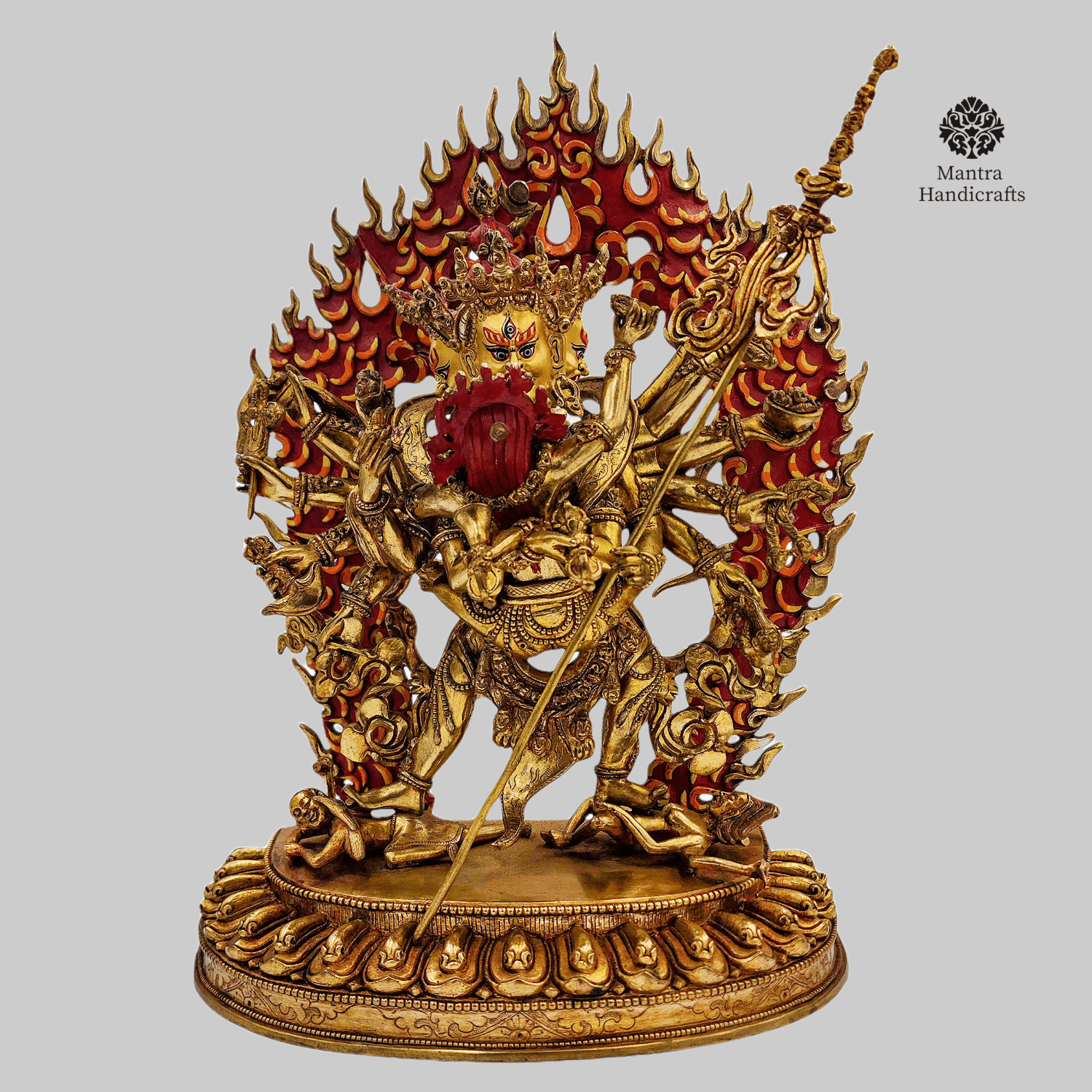 Chakrasamvara | Lord of the Circle, Tantric Deity
Chakrasamvara | Lord of the Circle, Tantric Deity
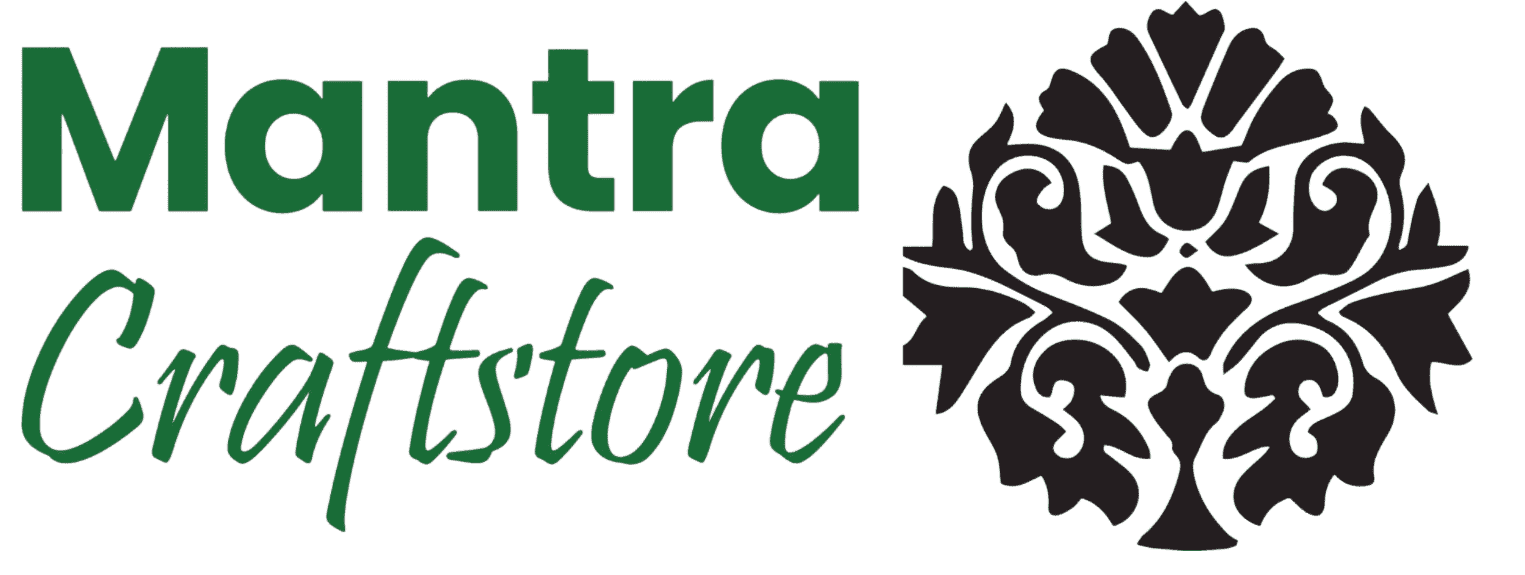
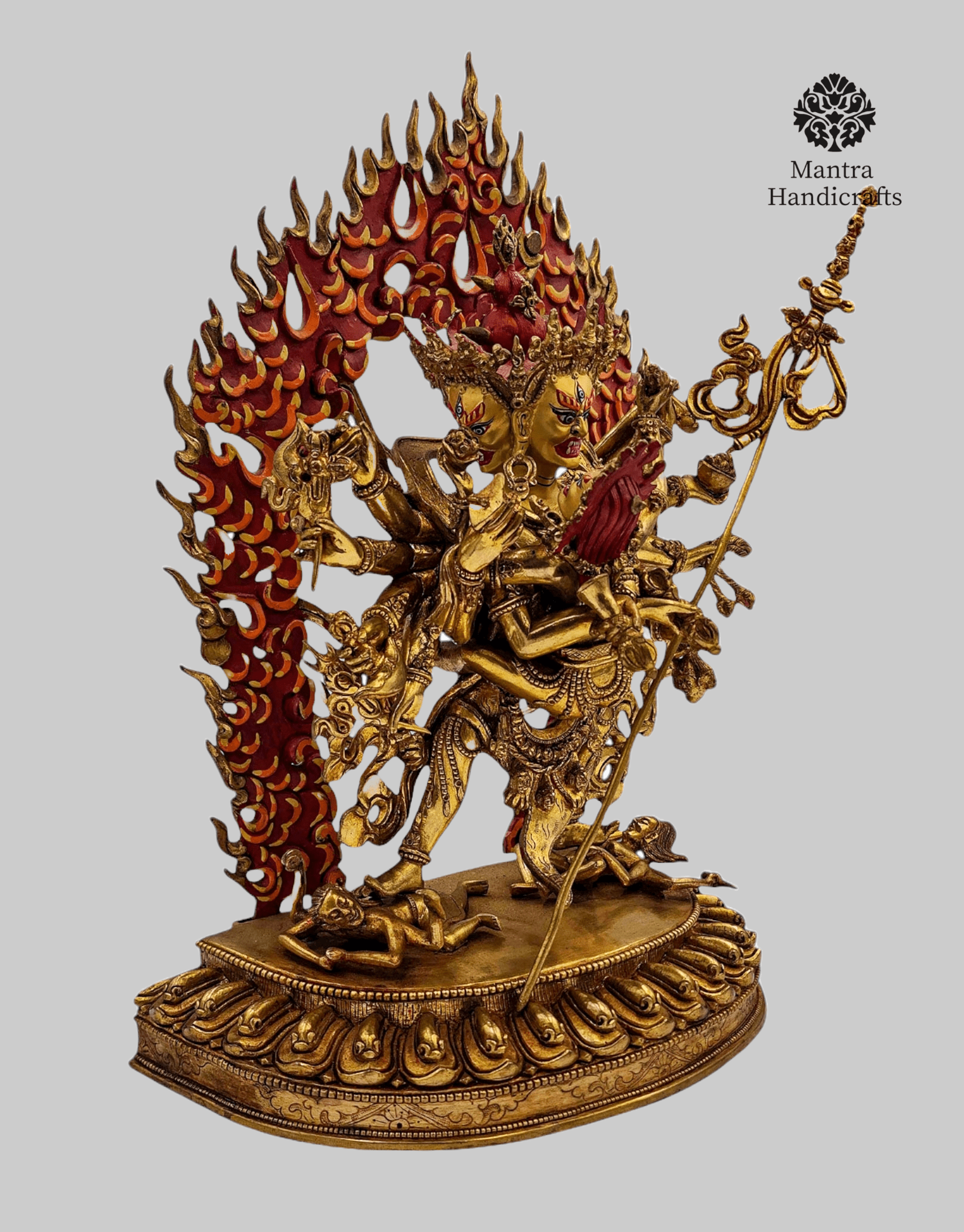
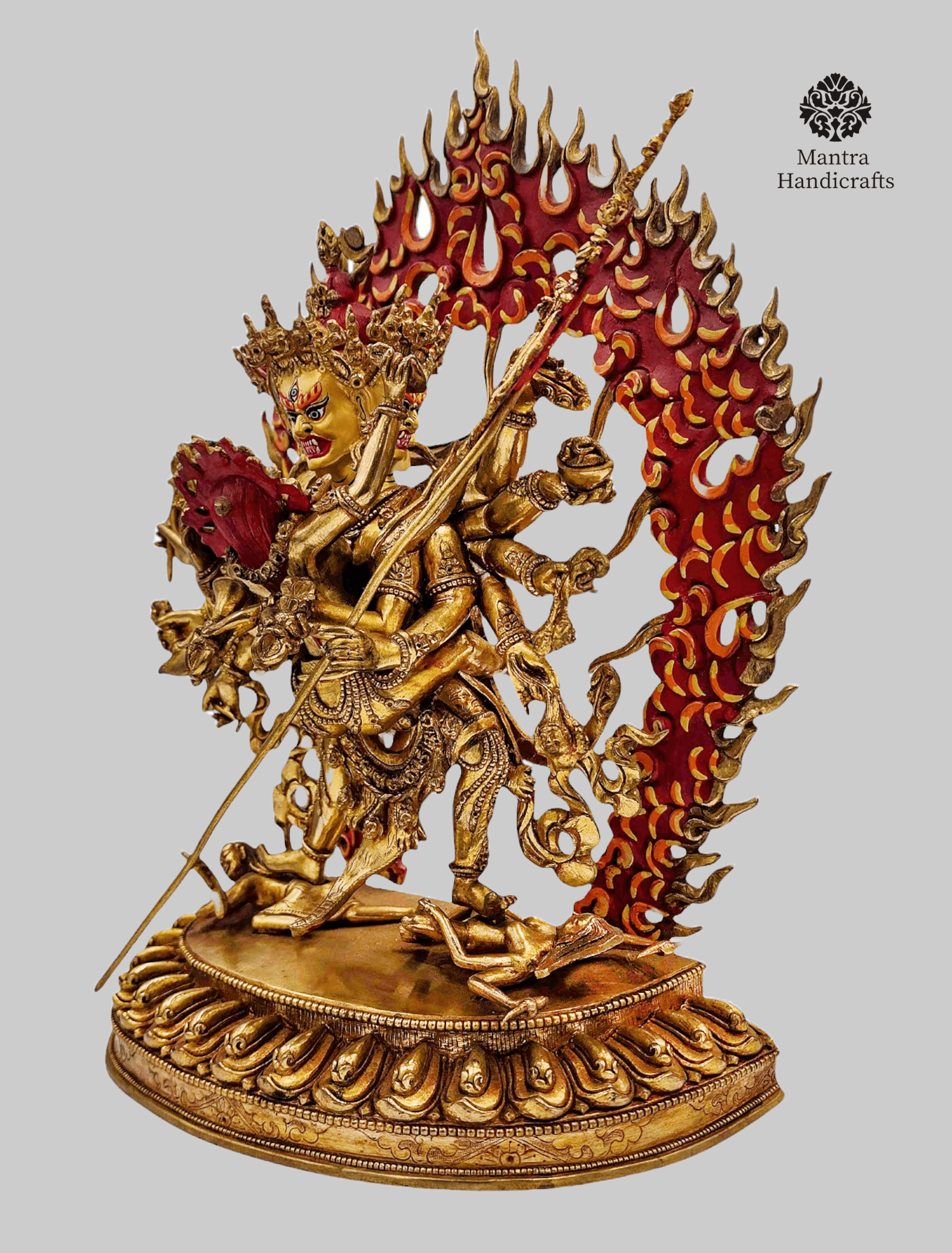
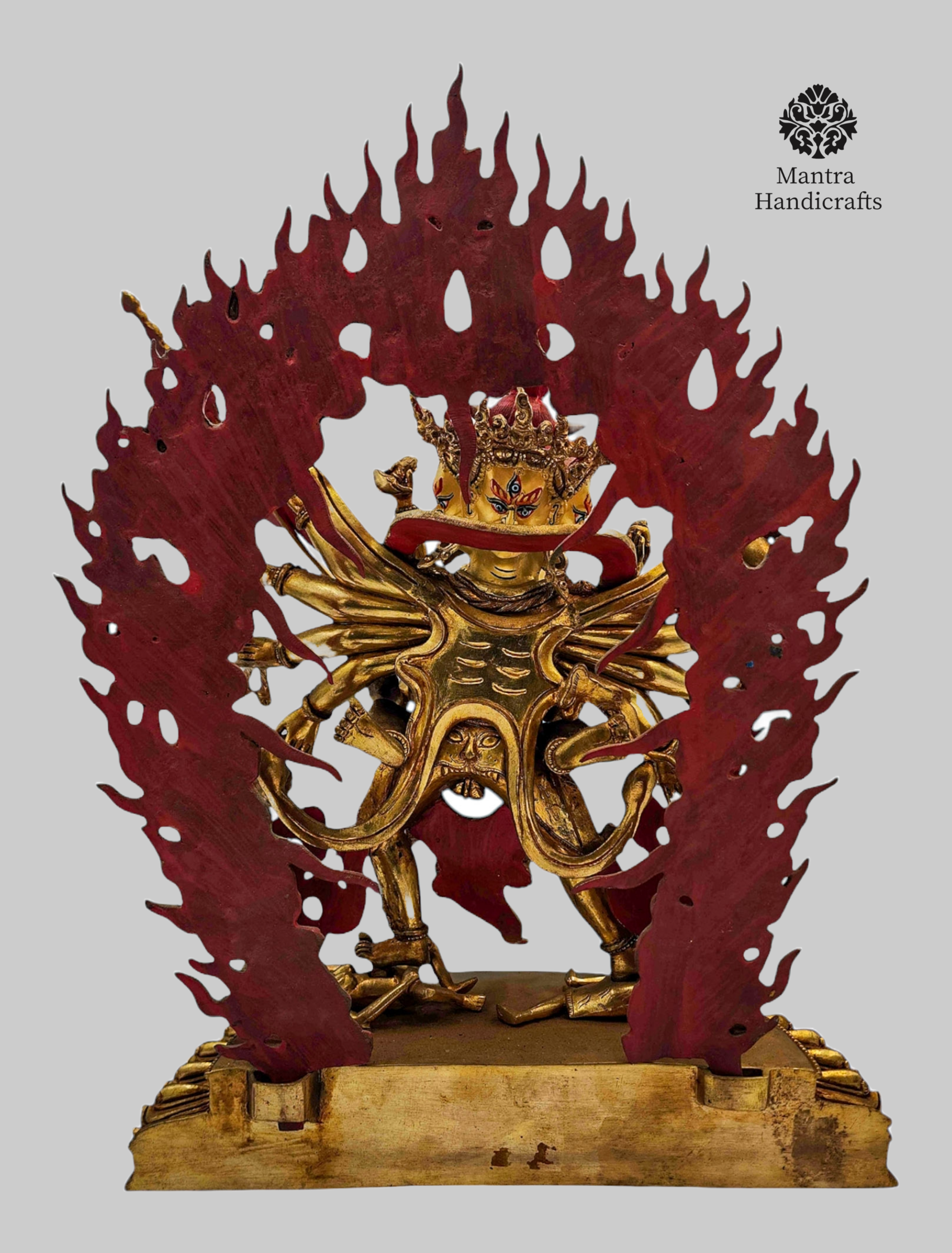

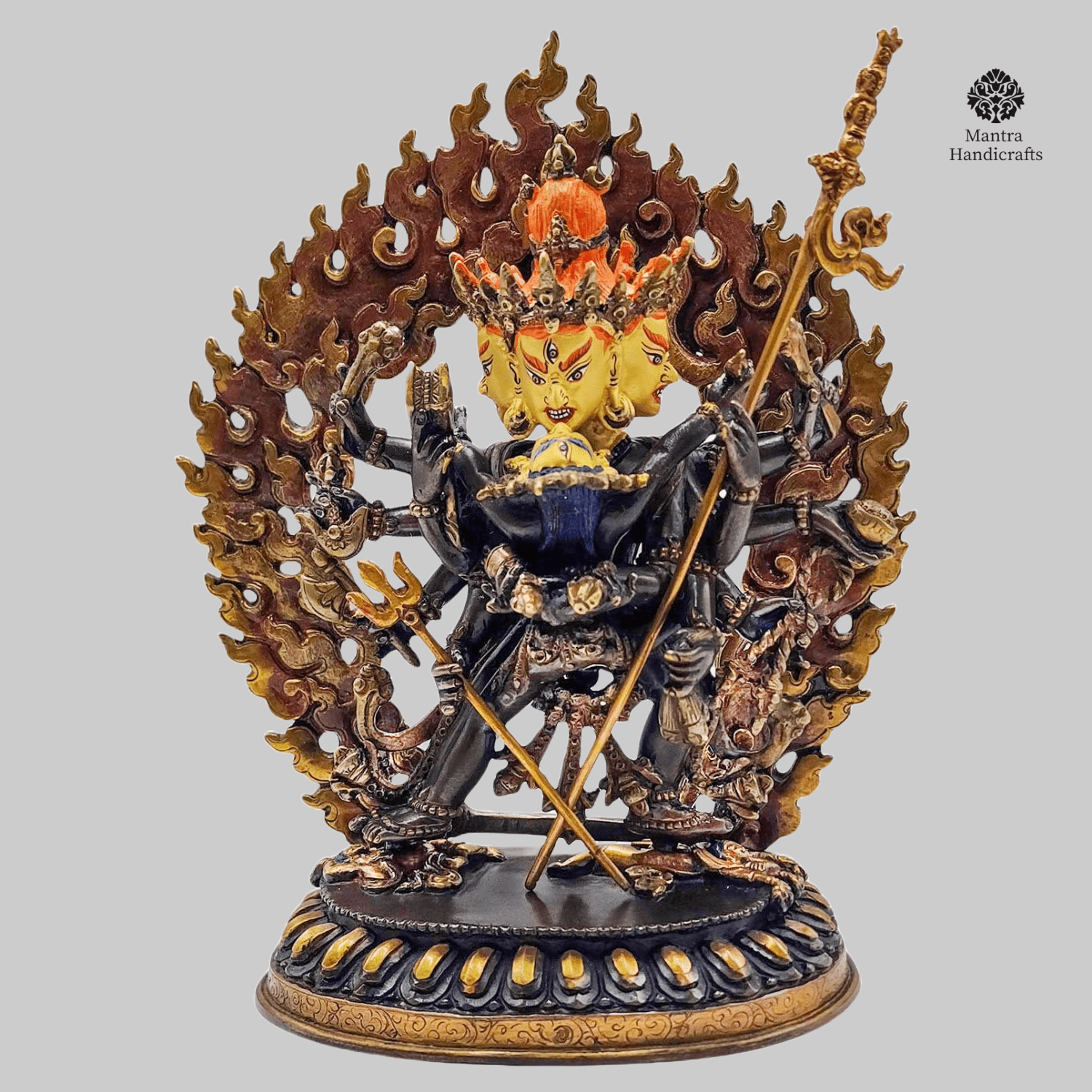
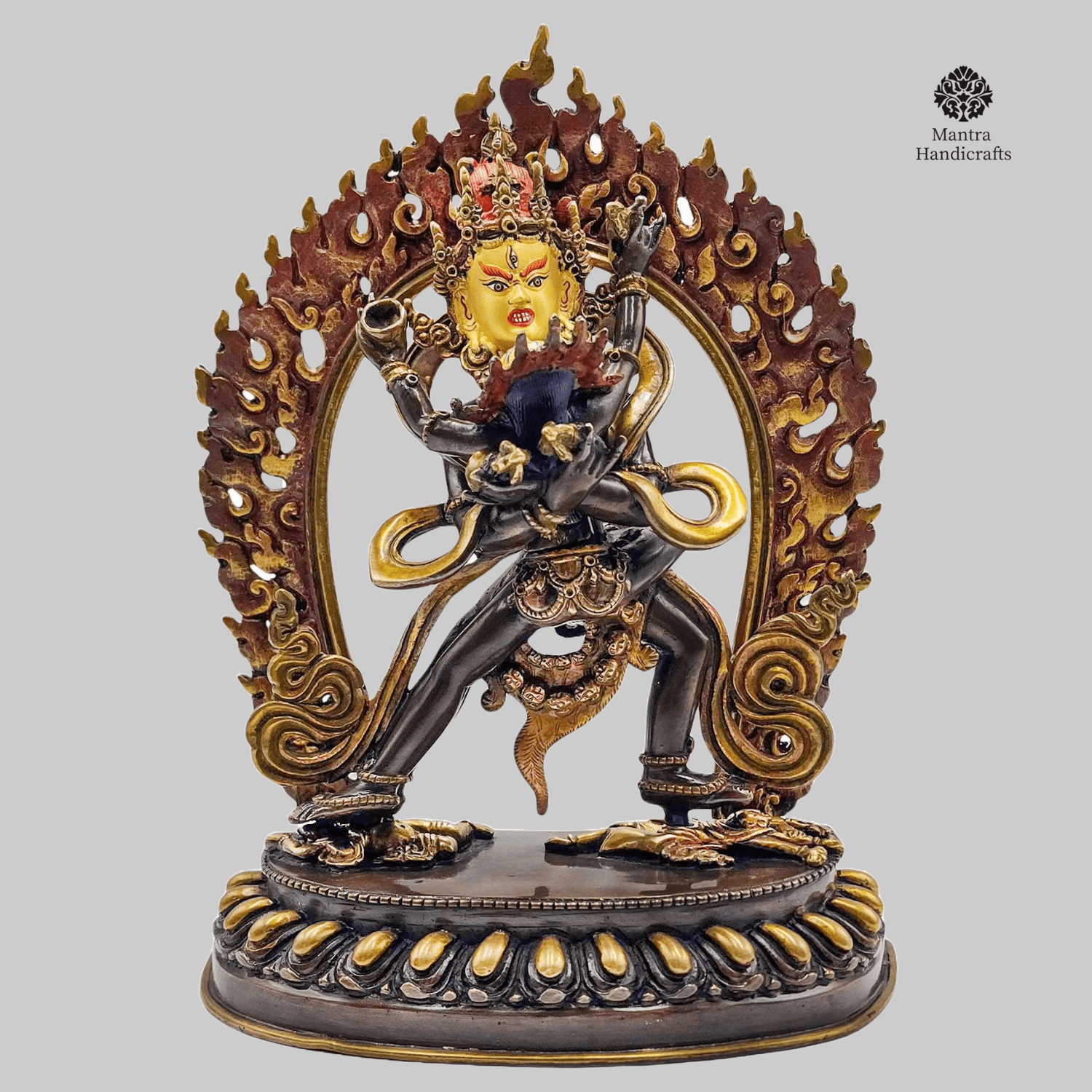
Reviews
There are no reviews yet